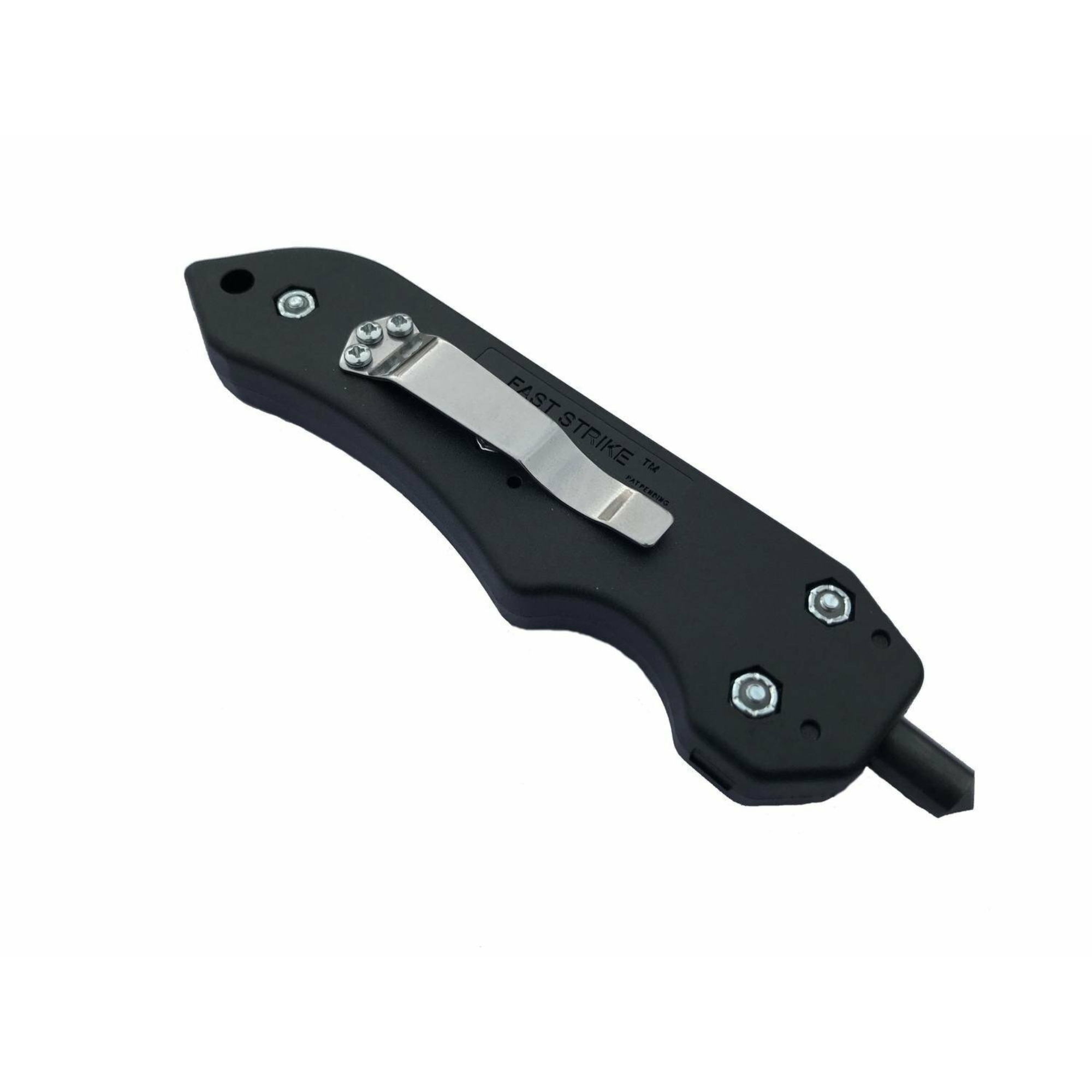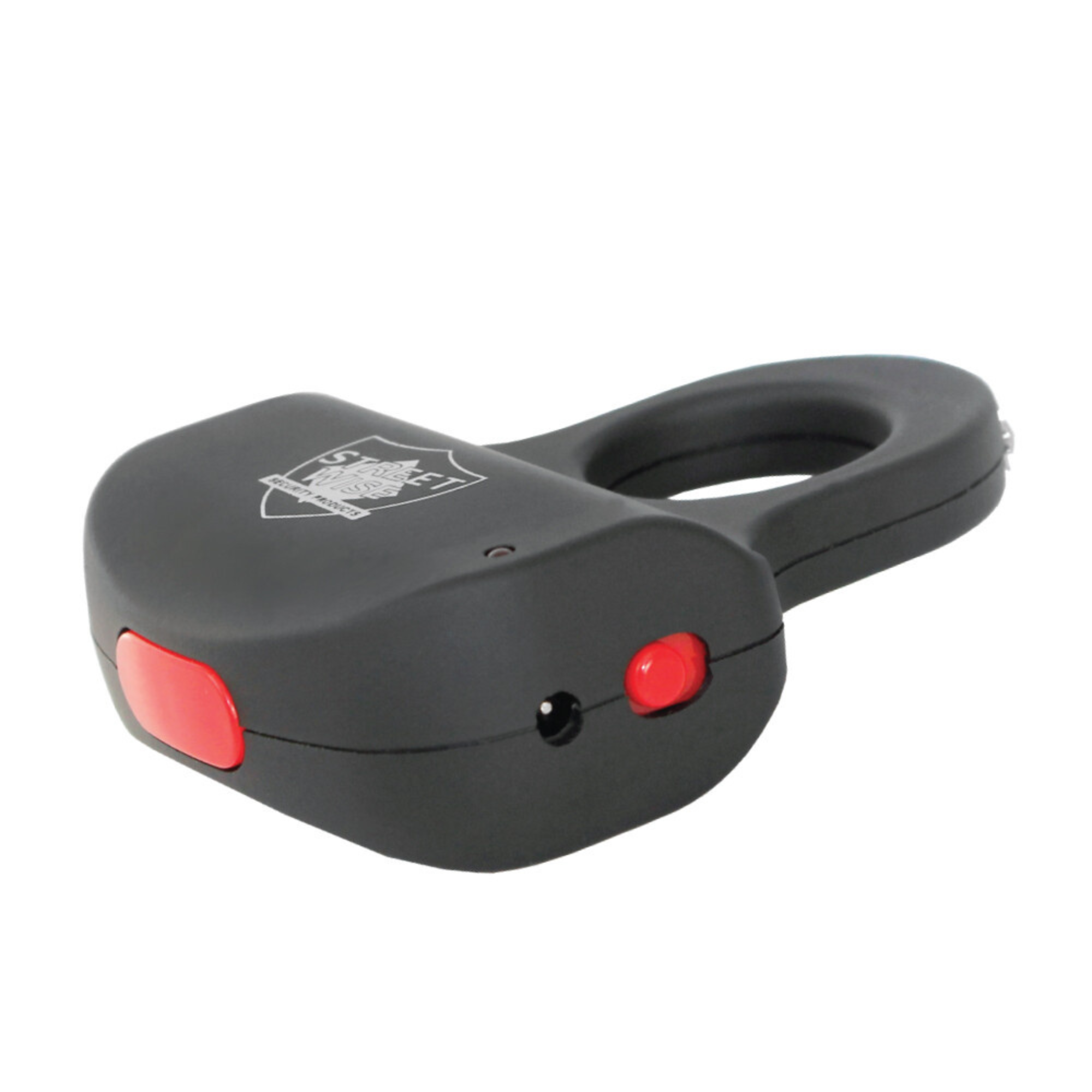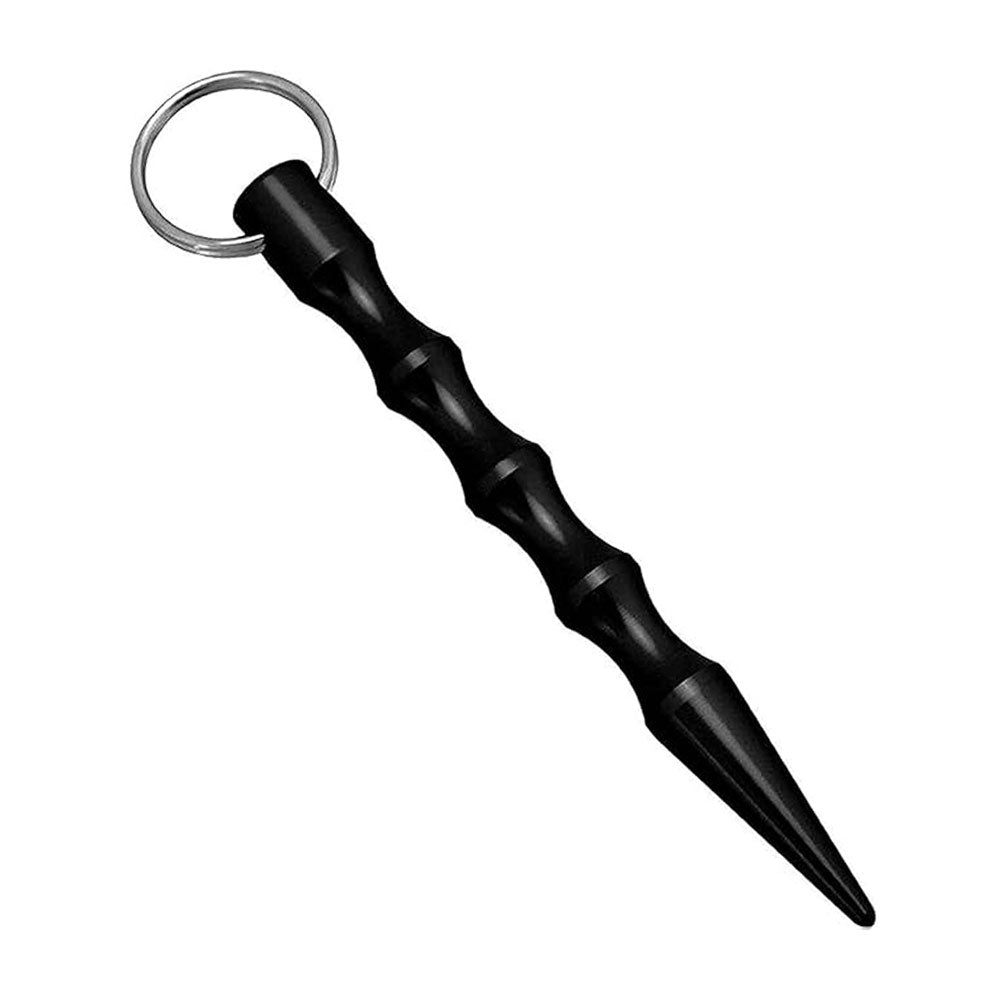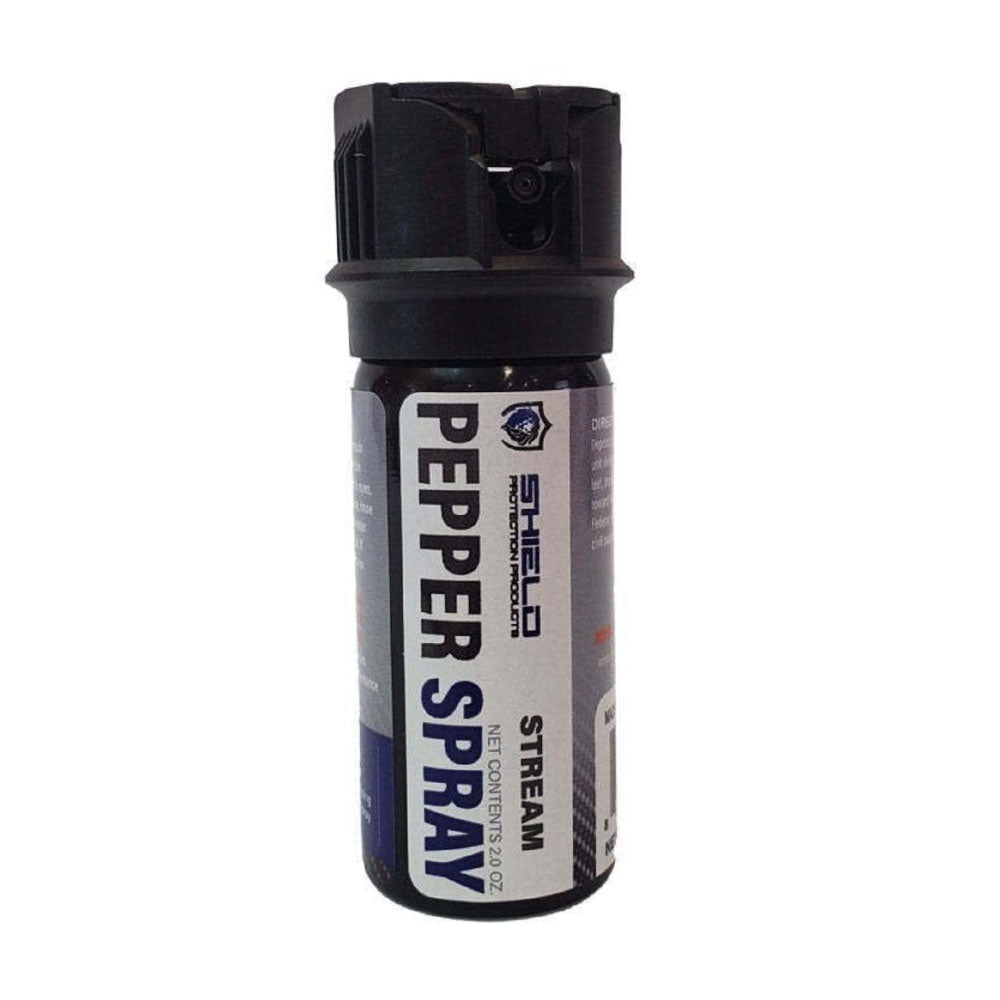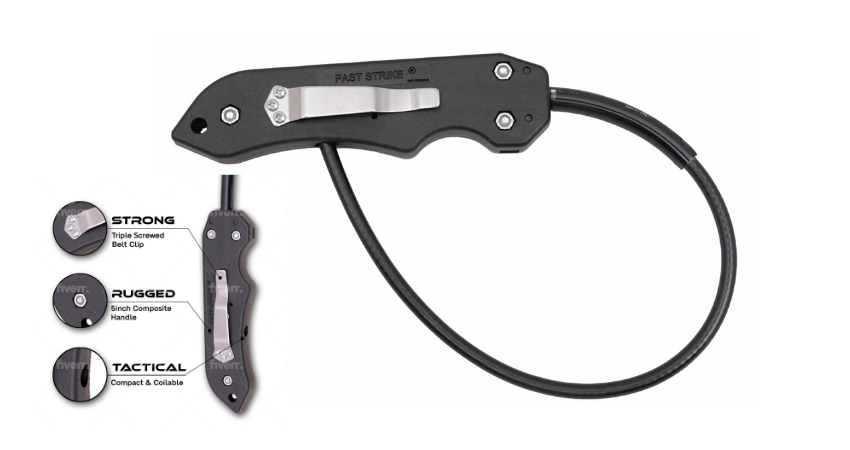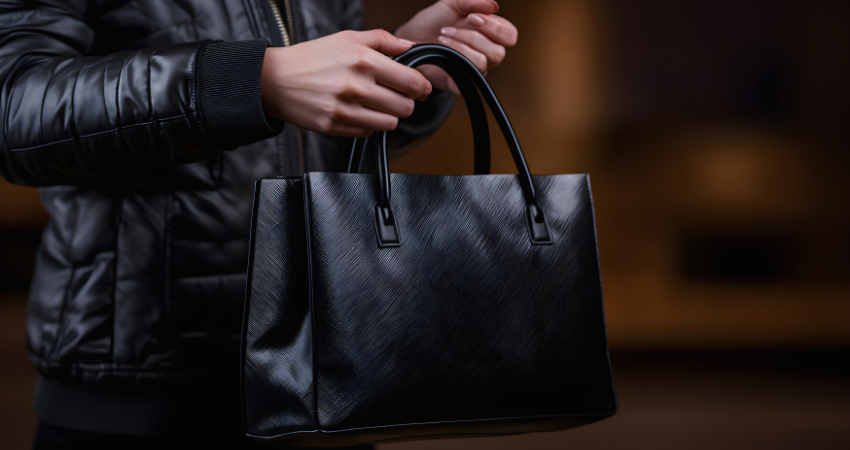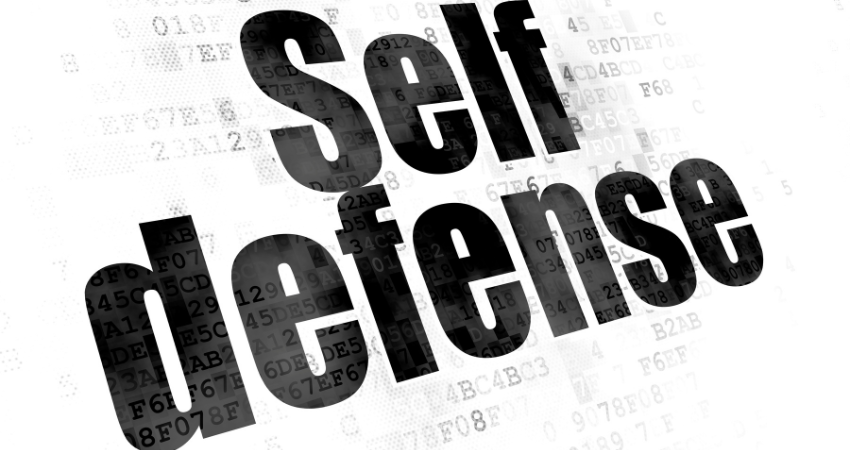
In today's world, keeping yourself safe is more important than ever. Many people think about using guns for protection. But, there's a growing interest in non-lethal options that can stop threats without killing anyone. This article will look at 10 top non-lethal self-defense tools to help you stay safe without harming your values.
There are many non-lethal tools out there, like stun guns, pepper spray, and personal alarms. Each has its own benefits, such as being easy to carry or very effective. It's important to know the laws about these tools and how to use them right. This way, you can feel safe and at peace.
Key Takeaways
- Non-lethal self-defense weapons provide effective protection without causing fatal harm.
- Explore a variety of options, including stun guns, pepper spray, and tactical pens, to find the right fit for your needs.
- Be aware of the legal landscape surrounding self-defense tools and learn how to use them properly.
- Prioritize personal safety while considering your values and ethical concerns.
- Stay informed about the latest trends and developments in the world of non-lethal self-defense.
The Importance of Situational Awareness
Situational awareness is key to staying safe but often overlooked. Many people don't realize how important it is to know what's around them. Knowing your surroundings can mean the difference between safety and danger.
Identifying Potential Threats
Being able to spot threats quickly is vital for self-defense. The twenty-one-foot rule shows that threats can reach you fast. Most people can't react quickly enough to defend themselves.
Experts say to watch a potential attacker's hands and eyes. Paying attention to their body language helps you stay safe.
Avoiding Risky Situations
Being aware isn't just about spotting threats. It's also about avoiding danger. This means staying away from risky areas and trusting your instincts. Making smart choices can keep you safe.
Practicing situational awareness every day is important. It helps you stay alert and safe. Talking to kids about the dangers of the world is also crucial for their safety.
"Situational awareness is emphasized as a crucial self-defense skill across all platforms, including for everyday people, the military, and law enforcement officers."
A company has been teaching Situational Awareness for 24 years. They also teach self-defense to everyday people. The blog writer became a firearms instructor, showing how important situational awareness is.
| Statistic | Value |
|---|---|
| Response time to threats within 21 feet | 1.5 seconds |
| Training experience of a select group of civilians to draw and shoot a holstered handgun with precision in 1.5 seconds | Few individuals |
| Typical distance of threat in real gunfight | Closer than 10 feet |
How can I protect myself without a weapon?
In today's world, knowing how to defend yourself without weapons is key. You might not always have a gun or other tools. But, there are non-violent ways to stay safe. Focus on talking down situations, using your body language, and being assertive.
Verbal De-escalation Techniques
Research shows that 70% of confrontations can be avoided by talking down the situation before it gets physical. When faced with a tough situation, use calm words, empathy, and negotiation. Speak slowly, keep eye contact, and show you understand. This can often stop things from getting worse.
Body Language and Assertiveness
Your body language and how you carry yourself can also help keep you safe. 85% of attacks can be successfully deterred by running away from the attacker. Stand tall, keep your head up, and make eye contact. This shows strength and confidence, making you less of a target.
Always try to avoid physical fights. By learning these non-violent methods, you can stay safe without needing a weapon. Stay alert, listen to your gut, and always put your safety first.
Escape Strategies and Risk Avoidance
In case you can't avoid a confrontation, having a plan is key. Know your surroundings, find exit routes, and be ready to leave quickly. This helps you stay safe in dangerous situations.
Keeping yourself safe is very important. Always try to avoid fights. Having a good escape plan and knowing when to leave can help you avoid harm.
It's best to avoid dangerous situations altogether. Stay alert, listen to your gut, and act fast if needed. Your safety should always come first. With the right strategies, you can face challenges with confidence.
- Maintain situational awareness at all times
- Identify potential escape routes and exit points
- Be prepared to take swift, decisive action to remove yourself from the situation
- Prioritize your personal safety over engaging in physical confrontation
- Trust your instincts and be proactive in avoiding dangerous situations
Using these escape strategies and risk avoidance can help you stay safe. Remember, your safety is the most important thing. Always put it first.
Non-Violent Self-Defense Techniques
While avoiding fights is best, sometimes you need to defend yourself. Knowing how to do this safely is key for your safety.
Pressure Points and Joint Locks
Using pressure points and joint locks can stop an attacker without hurting them too much. These methods work by applying pressure or bending joints. But, you need to learn them well to use them right and legally.
Striking Techniques
As a last option, you can use strikes to defend yourself. This includes palm strikes, elbow strikes, and groin kicks. These can stop an attack, but use them carefully and know the law. Learning these techniques well is important.
Always try to avoid fights. Focus on staying safe and aware of your surroundings. With the right training, you can handle threats safely and avoid fights.
"The best self-defense is to avoid the fight in the first place." - Bruce Lee
Striking Amplification
The Fast Strike Tactical Whip is a versatile self-defense tool designed for striking amplification, providing users with an effective means of defending themselves in critical situations. Its flexible yet durable design allows for quick, powerful strikes that can incapacitate an attacker with minimal effort. The lightweight whip can be deployed swiftly, delivering sharp impacts that amplify the force of the user's movement. This striking amplification ensures that even with a compact device, the defensive impact is significant, making the tactical whip an ideal choice for individuals looking for a discreet, portable, and powerful self-defense option.
Additionally, the Fast Strike Tactical Whip offers a tactical advantage by increasing reach and keeping threats at a safer distance. Its compact size makes it easy to conceal and carry, while its ergonomic design enhances control and precision during use. This combination of portability and effectiveness allows users to react quickly in high-stress situations, ensuring their safety without the need for extensive training. The whip's innovative design demonstrates that self-defense can be both practical and powerful, offering a reliable solution for personal security.
Legal Self-Defense Principles
Knowing your legal rights is key to personal safety and self-defense. In the U.S., laws vary by state but generally allow for non-lethal self-defense. It's important to know the rules about self-defense tools in your area.
Understanding Your Rights
Self-defense laws differ across states. For example, in Indiana, you don't have to retreat if you're in a safe place and facing danger. But in Minnesota, you must try to leave before using deadly force, even outside your home.
It's vital to know your state's self-defense laws. This ensures your actions are legal and justified. Talking to a lawyer or researching your state's laws can help you understand your rights better.
Appropriate Use of Force
Self-defense laws say you should only use the force needed to stop the danger. This means using the least amount of force to protect yourself, unless you must use more to avoid serious harm.
Using force correctly can be tricky. It depends on the threat, how dangerous it seems, and if you can safely leave or calm the situation. These factors help decide if using force is justified.
By knowing your rights and when to use force, you can protect yourself legally. This helps keep you and others safe.
Conclusion
This article has given you a detailed guide on how to stay safe without using weapons. It covers the importance of being aware of your surroundings and learning non-lethal self-defense. The goal is to help you handle threats safely and legally.
There are many tools and strategies for self-defense, like stun guns, pepper spray, and personal alarms. These options can help you feel safer and more confident. They allow you to protect yourself without using harmful force.
Staying safe is all about being alert, using good communication, and knowing the law on self-defense. Being informed and ready can make you feel more secure. It ensures you can protect yourself and your family if needed.
FAQ
What are some effective non-lethal self-defense weapons I can use to protect myself?
Effective non-lethal self-defense weapons include stun guns, pepper spray, and personal alarms. Also, tactical pens, kubotans, self-defense keychains, tasers, and expandable batons are good options. Whistles and self-defense flashlights can also help deter threats without causing fatal harm.
How can I develop strong situational awareness to prevent dangerous situations?
To develop situational awareness, be mindful of your surroundings. Observe people and situations. Avoid risky areas or scenarios. This helps you anticipate and prevent dangerous situations before they escalate.
What non-violent techniques can I use to protect myself without a weapon?
Non-violent self-defense techniques include verbal de-escalation. Use calming language and empathy to diffuse tension. Project confidence through body language and assertiveness to deter potential attackers.
How can I create an effective escape plan and avoid risks?
Create a well-rehearsed escape plan. Be aware of your surroundings. Identify potential exit routes. Prioritize personal safety by disengaging from confrontations to avoid harm and reach safety.
What non-violent self-defense techniques can I use if a confrontation cannot be avoided?
What are the legal principles surrounding self-defense without a weapon?
In all 50 states, provisions allow for the use of less-than-lethal self-defense methods. It's essential to understand the specific laws and regulations in your jurisdiction. This ensures your actions are justified and within the bounds of the law.


